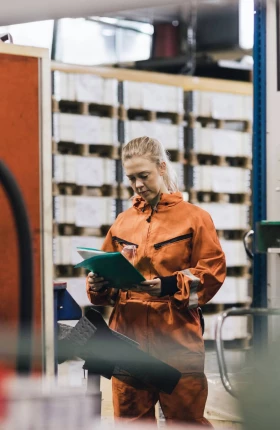I have a big, broad ambition: figuring out how to solve for systemic problems. We’re facing global disruptions in many dimensions—the climate crisis, growing inequality, and complex economic challenges, to name a few. But we’re falling short in our ability to understand and solve them.
What’s exciting me at the moment is significant advances in what I call “deep design.” It’s basically the integration of three things: agent-based modeling, artificial intelligence (AI), and human-centered design. This combination of tools and disciplines is enabling the research community and corporate R&D teams to build AI-based simulations that, for the first time, model social and economic complexity.
Take the challenge central banks face in designing policies to manage inflation. We already have economic models. But as we know from shocks like the 2008 financial crisis and the COVID-19 pandemic, these models are usually quite bad at predicting outcomes. That’s because they make some overly simplistic assumptions about the world. They often assume, for instance, that there is a single, representative “agent,” such as a person or company, whose behavior represents that of an entire population. The emerging field of complexity economics uses models that account for the heterogeneity of real-world markets by simulating interactions between different sets of agents. This bottom-up approach to macroeconomic modeling is proving really robust.
The emerging field of complexity economics uses models that account for the heterogeneity of real-world markets by simulating interactions between different sets of agents. This bottom-up approach to macroeconomic modeling is proving really robust.
The Bank of England, for example, partnered with the Oxford Institute for New Economic Thinking to simulate the UK housing market to better calibrate credit policies and reduce risk. By modeling the behavior of first-time buyers, homeowners, buy-to-let investors, and renters, they were able to identify market drivers. For example, the model shows how growth in the buy-to-let sector increases the magnitude and frequency of housing booms and busts. This simulation is generating results that are very relevant to what’s happening in the UK today as we start dealing with what could be a deep recession. Similarly, the Bank of Canada is using agent-based simulations to better model inflation by accounting for how people’s expectations of rising prices change over time.
But how, you might ask, do these models solve more strategic optimization problems? Take, for example, designing tax policies to better balance social equality and economic growth. Traditional agent-based models are not well suited to simulating how taxpayers might respond to policies for which we lack real-world data. This is where AI comes in, specifically “deep reinforcement learning,” which can be used to train agents to adapt their behavior in order to earn more rewards.
Salesforce is pioneering this field with the AI Economist, a general framework that uses an AI-based simulation of the economy and reinforcement learning to design economic policies. It can be used to study the interplay between the labor market and tax policy, for example. For the labor side, its team designed a virtual spatiotemporal economy populated by worker agents of different skill levels who collect and trade resources like wood and stone to build houses. They sell the houses to earn income and are rewarded for increasing their utility. Higher-skill workers earn more income for building houses, and thus more utility. Building houses also takes effort, which lowers utility. On top of this little civilization, the AI Economist has added a government planner who redistributes wealth through tax policy. The planner is rewarded for balancing equality with productivity. Consider it a sort of algorithmic social contract.
Now comes a nifty trick called “two-level reinforcement learning.” Both the workers and the government learn to adapt their behavior as they go in order to achieve maximum rewards. And this approach works. By encoding social values into the planner’s reward, the AI Economist has proven to be 16% better at balancing social equality than conventional tax models and the free market. That is a profound result.
Deep design has the potential to take on even bolder initiatives for addressing systemic problems. It can be used to design negotiation protocols for global climate cooperation, for example, and to simulate climate-induced migration and emergency evacuations.
Deep design has the potential to take on even bolder initiatives for addressing systemic problems. It can be used to design negotiation protocols for global climate cooperation, for example, and to simulate climate-induced migration and emergency evacuations. The critical bottleneck is fast becoming the computational scale required to process the immense amount of data needed to train models in order to simulate realistic human behavior under diverse scenarios.
But there are also deep design applications that companies can leverage in the near term using existing datasets. Consumer goods companies, for example, can use these tools to discover incentive structures that would lead people to adopt green products. Imagine if we’d had this when solar panels were first introduced. Utilities can design policies and tariffs to help households optimize their use of electricity.
By tapping into an existing ecosystem of startups, academic institutions, and corporate R&D, I think companies can play an important role in advancing a shared platform on which designers, AI engineers, and domain experts can co-design simulations and accelerate test-and-learn to address real-world challenges. My hope is that deep design may just become our operating manual for spaceship Earth.








